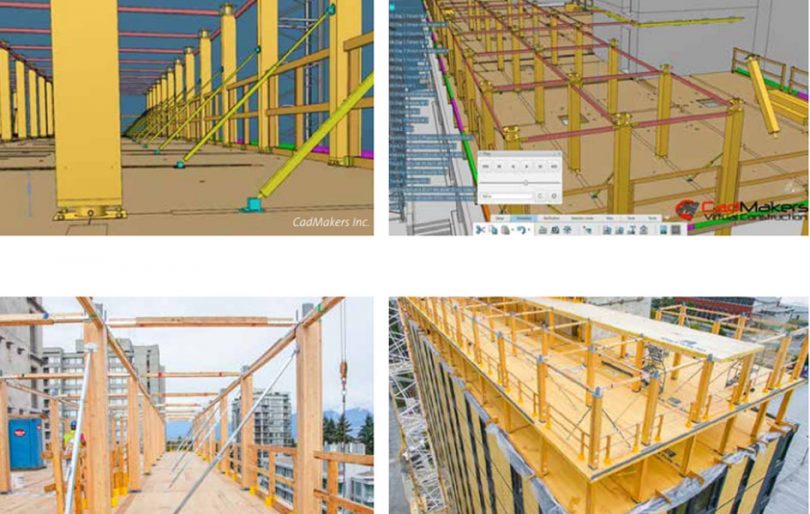Construction employs about 7 per cent of the world’s population. Globally, $10 trillion is spent on construction-related goods and services every year accounting for 13 per cent of world output. But the industry has a productivity problem.
With a growing demand to build more affordable housing, accommodation, and infrastructure—and to deliver it better and faster—the construction sector in B.C. is taking the lead streamlining construction planning and technology. And they are doing it with a centuries-old material, abundantly available in our backyard—wood.
Today an increasing number of prefabricated and modular timber projects are being built in B.C. and beyond, taking advantage of modern manufacturing methods and technologies. Off-site construction continues to grow in popularity and B.C. companies are finding timber is an ideal material when it comes to this more accurate factory-made approach to assembling a building like a kit of parts.
But to do this companies need to take advantage of innovations in digital design tools, such as building information modelling (BIM), Design for Manufacturing and Assembly (DfMA), 3D rendering software and augmented virtual reality (AVR). More and more, the industry is seeing buildings designed in software like Revit, a 3D modeling application. The files can then be converted to a format for computer numerical control (CNC) machines in the factory.
In some cases, mass timber projects may be challenged by construction codes that can lead to the development of site-specific regulations and the proposal of alternative solutions. In these situations, BIM enables authorities and code consultants to clearly visualize the project and proposed solutions, quickening the approval process.
A novel approach of the precedent-setting 18-story tall timber Brock Commons Tallwood House at the University of British Columbia (UBC) was the intensive use of virtual design and construction (VDC) tools and methods. VDC is a subset of BIM primarily focused on the 3D geometric representation of a facility to support analysis for design and construction and can be particularly helpful for large scale mass timber projects. BIM allows the representation of the properties of the different building elements which are linked to a database – almost like a taxonomy of building parts. This allows the creation of a project prototype that can be tested and simulated against performance criteria.
BIM can also help the installer and manufacturer coordinate the delivery of the structural elements. For Brock Commons, BIM was used to plan out the delivery and unloading cycles for the timber elements. This exercise helps to avoid misplacement of elements and plan just-in-time delivery for construction sites where space is limited, and elements cannot be stored onsite, but are immediately erected and put in place.
A two-storey mockup and 3D modelling allowed the design team to discuss, test and streamline the process prior to site erection. The wood structure was completed in less than 70 days after the first prefabricated components arrived on site—four months faster than a typical project of this size, according to Fast + Epp, the structural engineering firm on the project.
BIM excels when combined with an Integrated Project Delivery (IPD) – a project delivery method that integrates people, systems, business structures and practices into a process that collaboratively harnesses the talents and insights of all participating experts. As part of this team CADMakers, the dedicated VDC consultant, was involved early and throughout the project to continuously incorporate design iterations and updates notifying the team of potential issues. The VDC model also functioned as a tool for communicating with the construction trades prior to tender to clearly define the scope of the project. The overall result is a more seamless, efficient and frequently faster design and construction process.
Improved collaboration and project visualization are especially useful when new building technologies such as mass timber are being implemented. BIM allows multidisciplinary teams to identify challenges sooner and help address them with detailed planning and precision.
Read about the potential impacts of BIM and mass timber construction in a report by the BIM TOPiCs Research Lab at UBC.
Photo: As the project owner, the University at the outset directly hired the VDC modelling firm to be a part of the project team, and the firm’s modellers functioned as facilitators throughout design development and construction. (renderings courtesy CadMakers, images naturally:wood, photographer KK Law)










Love this and want to learn more about CLT construction and design.